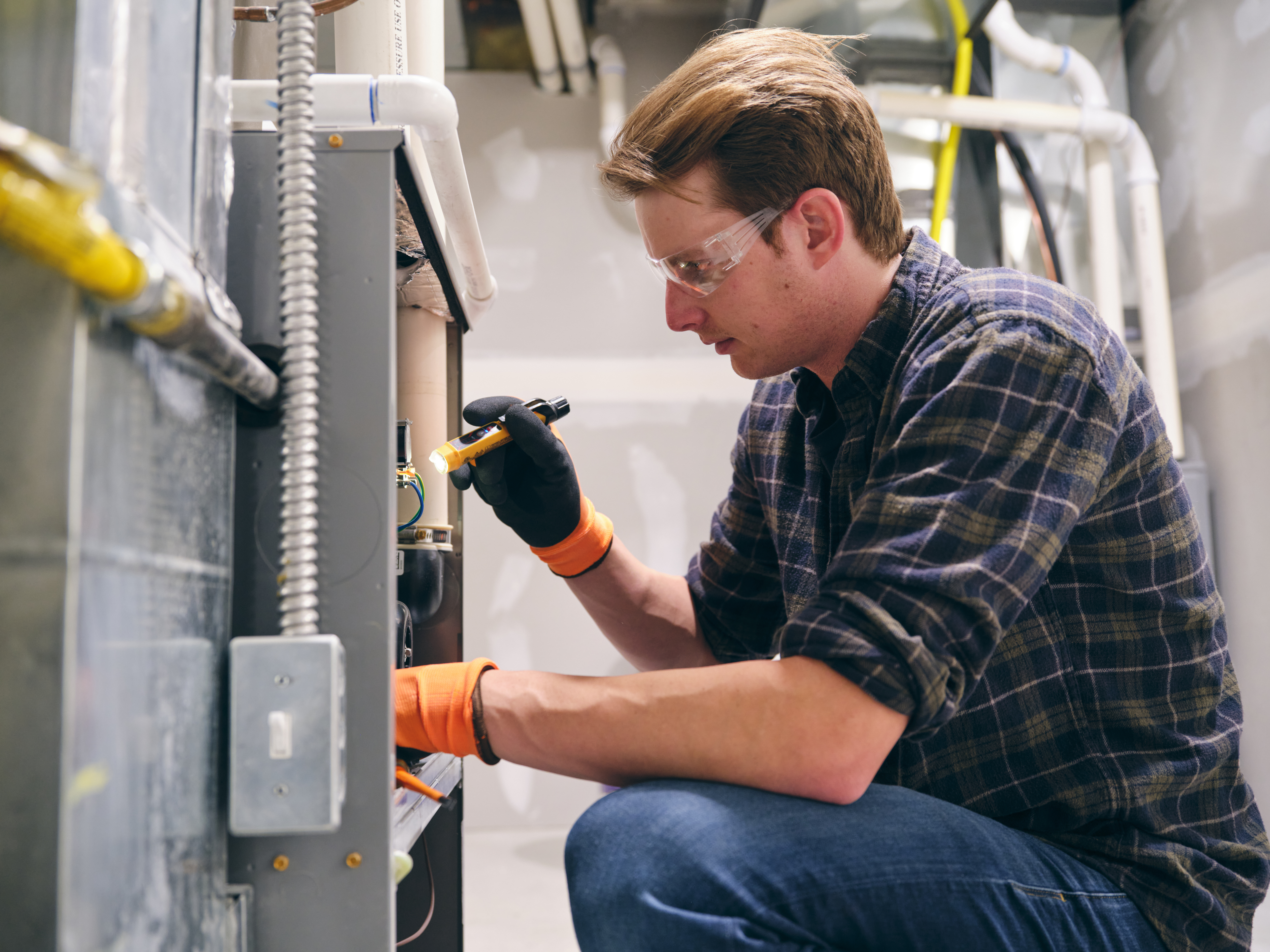In a furnace, the heat exchanger is what transfers the heat from the gas burners to the cool air flowing through the unit. A heat exchanger is made up of multiple steel tubes that are welded on one end to the combustion chamber where the burners are and connect to the exhaust flue on the other end. The hot combustion fumes produced by the burners flow through the heat exchanger, causing the steel to become extremely hot. The cool air drawn into the furnace from your house by the blower flows over the heat exchanger, and the heat radiating off of the steel instantly raises its temperature, which the system then recirculates through your house.
Heat exchangers are designed to be highly robust and will usually last throughout the entire life of a furnace. However, there are times when the heat exchanger can crack and lead to carbon monoxide escaping out of the furnace. This is why it is essential that you have your furnace inspected annually to ensure that the heat exchanger is still in good shape.
Typical Heat Exchanger Warranties
Most major furnace manufacturers provide a much longer warranty on the heat exchanger than they do for the other parts and components. The heat exchanger will be backed by a 20-year or even lifetime warranty on most new furnaces. Most of the other parts are only covered for 10 years or less.
This warranty will cover the cost of a replacement heat exchanger if the original one fails or cracks due to a manufacturer’s defect. However, defects are extremely rare, and the only thing that sometimes causes a problem is if the steel tubes aren’t correctly welded to the combustion chamber, which can lead to the joints cracking or breaking.
What Can Cause a Heat Exchanger to Crack?
A cracked heat exchanger is by far the most severe issue a furnace can have since it will allow carbon monoxide and other harmful combustion fumes to escape. If the heat exchanger does crack and the issue isn’t covered under warranty, you’ll usually be left with no other option than to replace your furnace. Replacing the heat exchanger is possible, but it is highly complicated and time-consuming and will usually end up costing you about as much as simply installing a new furnace.
Heat exchangers rarely crack due to a manufacturer’s defect. Instead, it typically happens due to a lack of proper maintenance or simply as a result of aging and general wear and tear, and these issues won’t be covered under the furnace’s warranty.
Rust and corrosion can sometimes slowly develop on the heat exchanger, which can weaken the steel and lead to it cracking or holes starting to form. More commonly, the joints where the tubes connect to the combustion chamber will crack due to continual expansion and contraction.
As the heat exchanger absorbs heat from the burners, the metal slightly expands. Once the furnace shuts off, the heat exchanger quickly cools down, and the metal then contracts. This constant expansion and contraction can slowly weaken the joints and lead to them cracking or completely failing.
When a furnace is working properly, the expansion and contraction are usually quite minimal and won’t lead to the heat exchanger cracking. However, if the furnace regularly has issues with overheating, the metal will expand much further and may quickly start to fail.
How to Prevent Overheating
The most common reason furnaces overheat is that the airflow to the system becomes restricted. If the air filter isn’t changed regularly and starts to clog up, it will limit how much cool air comes into the furnace. Experts recommend that you change your furnace filter at least every three months. You should also inspect it at least once a month because factors like your heating system running more during frigid weather may necessitate changing the filter more often.
A dirty, malfunctioning, or worn-out blower will also reduce how much cool air enters the furnace. If there isn’t enough cool air constantly flowing over the heat exchanger, the steel tubes can heat up to the point that the furnace starts overheating. The best way to prevent heat exchanger damage due to a blower malfunction is to have your heating system regularly serviced by a qualified HVAC technician.
It is also important that the supply vents in the home are open and not clogged or blocked by furniture or curtains. If they are obstructed, your heating system will not be able to disperse hot air properly, and the furnace can start to overheat because it has nowhere to go.
Contact the Professionals
With more than 20 years of experience, Smith & Willis Heating & Air Conditioning is the most trusted HVAC contractor in Commerce City and the Denver area. We install, maintain, and repair heating and cooling systems. In addition, we are indoor air quality experts. Contact us today to schedule an appointment with one of our HVAC technicians.




